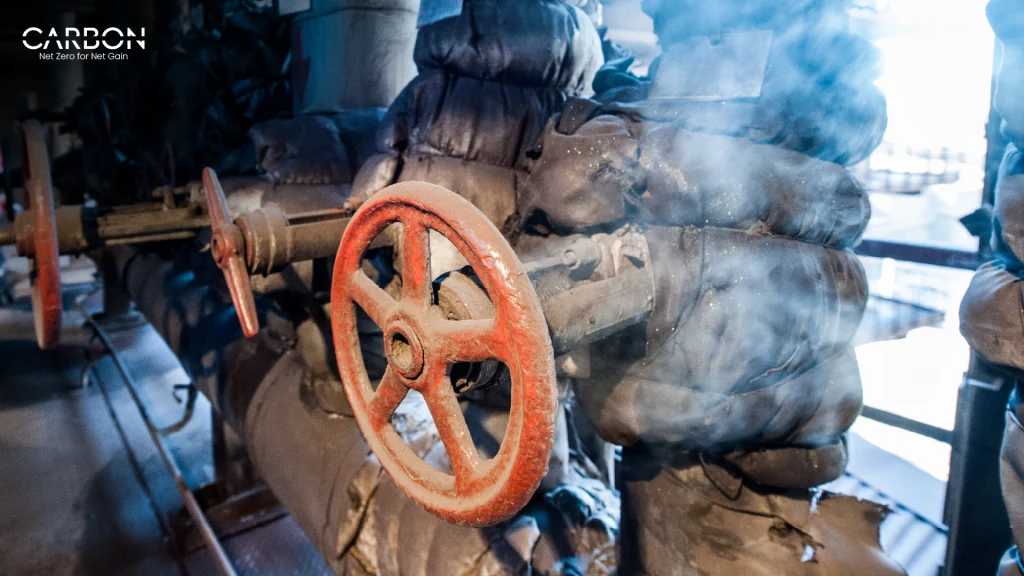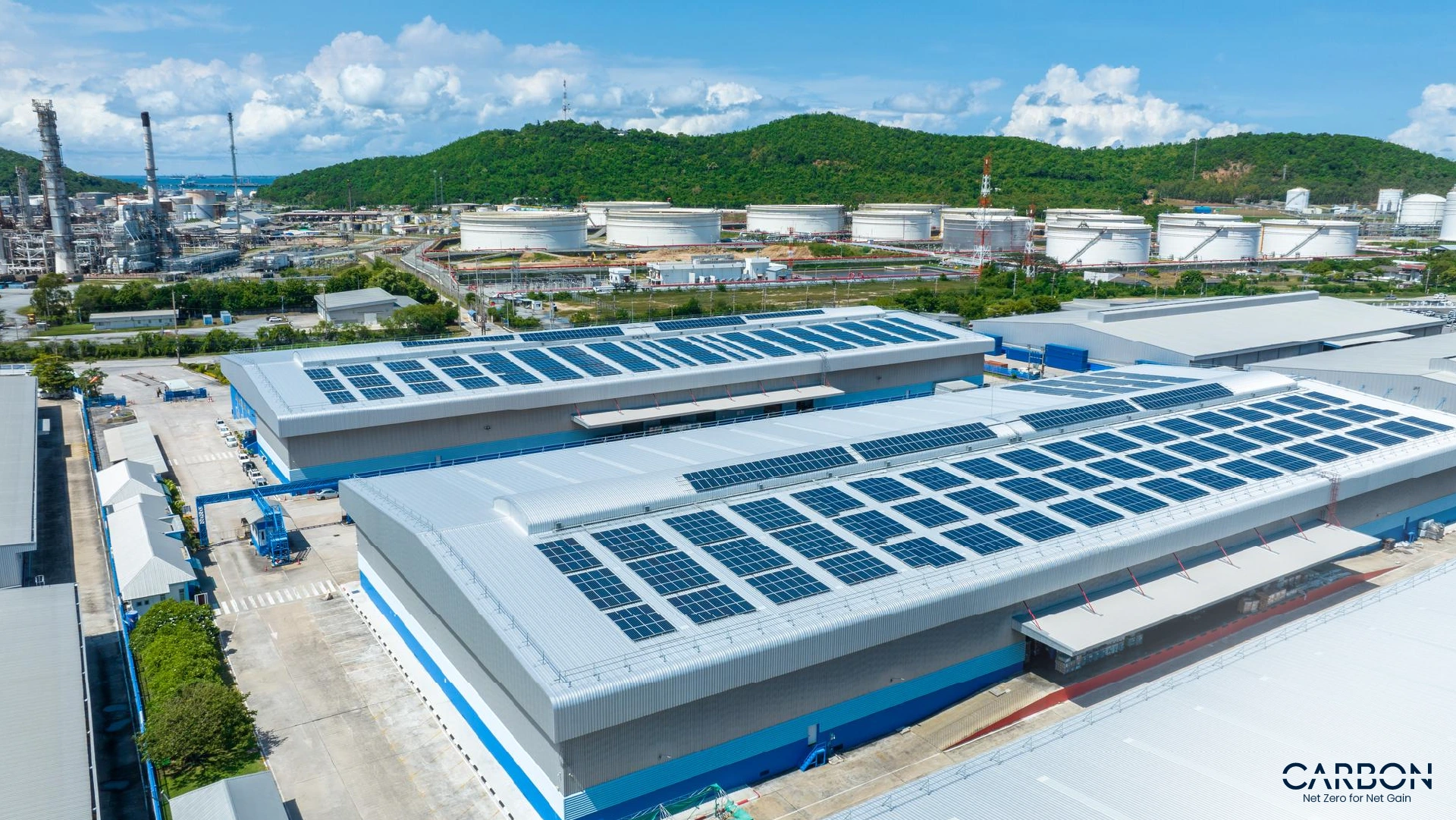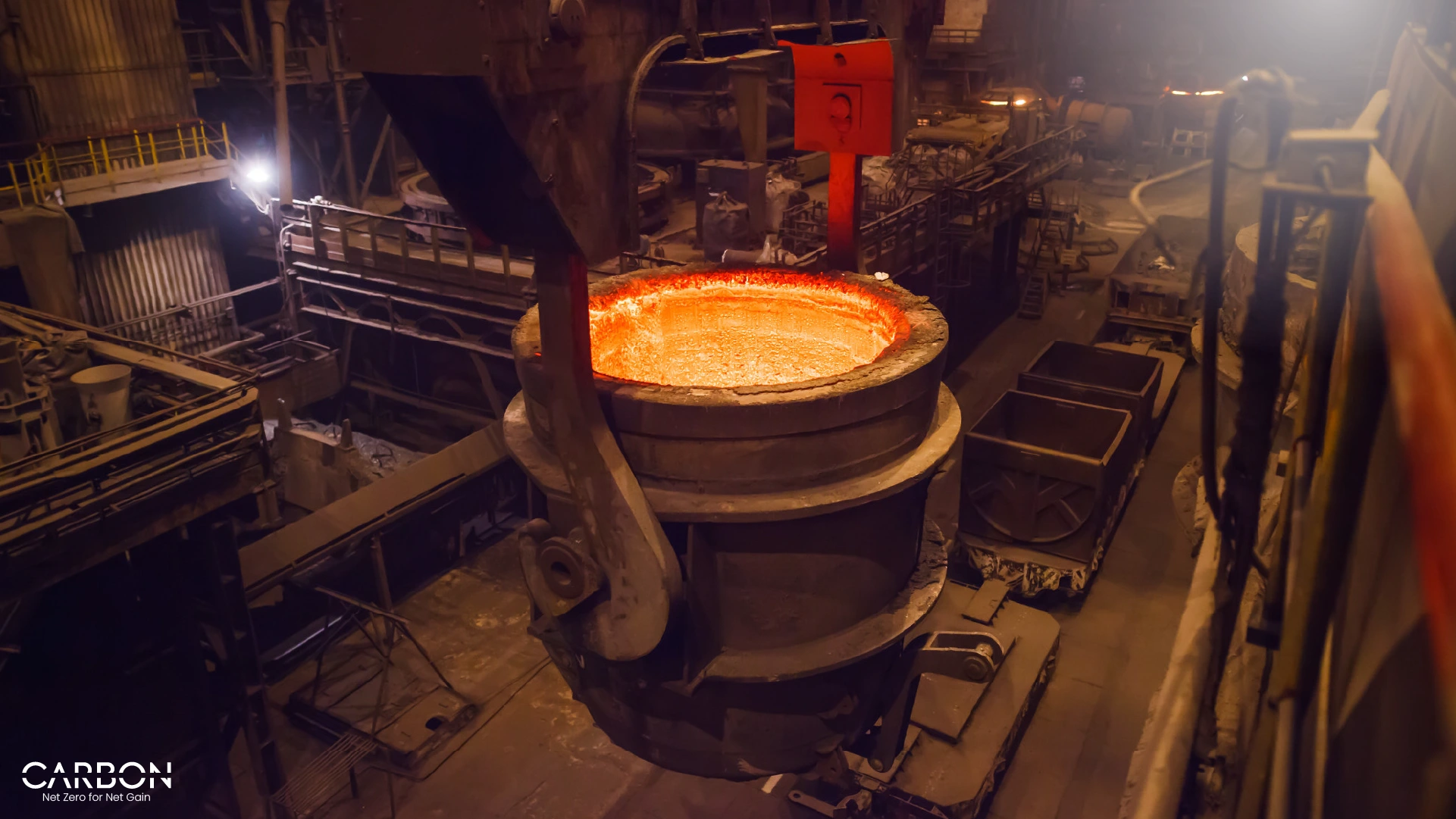Key Takeaways
Manufacturing plants waste nearly 40% of their energy through inefficient equipment, lack of real-time monitoring, and unoptimized processes. But this represents a massive profit opportunity waiting to be captured.
• Energy efficiency investments pay back in 18-20 months, not the 5-10 years many assume, with 70% of facilities reporting ROI above 10%
• Real-time energy monitoring delivers 4x better results than traditional audits (20% vs 5% savings) by providing granular visibility into waste
• Quick wins like fixing compressed air leaks can reduce energy loss by 30% during production, while LED upgrades slash lighting costs by 80%
• Process heating accounts for 51% of manufacturing energy use, with one-third escaping as waste heat that can be captured and reused
• Successful implementation requires cross-functional teams with executive backing, baseline measurements, and continuous monitoring protocols
The companies addressing energy waste today are transforming operational costs into competitive advantages, proving that sustainability and profitability go hand in hand in modern manufacturing.
Your manufacturing plant is bleeding money.
Every hour. Every shift. Every day.
While you’re focused on production targets and quality metrics, nearly 40% of your energy spend is vanishing into thin air. That’s not a typo. It’s not an industry average you can write off as “normal operating costs.”
It’s waste. Pure and simple.
Here’s what’s really happening: energy efficiency in manufacturing could slash U.S. industrial energy use by 14-22%[23]. Yet most factories keep burning through electricity like it’s free.
Your plant might be consuming far more energy than necessary, driving up costs, wasting resources, and creating a bigger environmental footprint than your competitors who’ve figured this out[24].
This isn’t about swapping out lightbulbs for LEDs. That’s kindergarten stuff.
This is about rethinking energy use at every stage of your manufacturing process[25]. The companies that get this right are able to cut costs and turn energy efficiency into a competitive weapon.
The industrial energy efficiency market is expected to hit $41.2 billion by 2030, growing at 8.6% annually[24]. The smart manufacturers are already using data and analytics to rebuild their operations from the ground up.
We’ve spent years digging into why plants waste energy and building solutions that actually work on factory floors. Not boardroom theories. Real fixes.
Here’s what you’ll get: exactly why most facilities waste nearly 40% of their energy, and the step-by-step approach to fix it without shutting down production.
Your competitors who figure this out first? They’re going to eat your lunch.
Why Most Plants Waste Energy: Root Causes
“If we reduce batch sizes by half, we also reduce by half the time it will take to process a batch. That means we reduce queue and wait by half as well. Reduce those by half, and we reduce by about half the total time parts spend in the plant. Reduce the time parts spend in the plant and our total lead time condenses. And with faster turn-around on orders, customers get their orders faster.” —
Manufacturing plants across America are hemorrhaging energy.
The hard truth? Most facilities waste a staggering 40% of their energy consumption. According to industry experts, companies could improve energy performance by 10-20% through proper energy waste management [1].
Let’s dig into why this happens.
Inefficient equipment and outdated systems
Picture this: $65 billion worth of industrial automation assets are currently reaching the end of their useful life [24].
These outdated systems are sluggish and energy vampires.
Aging equipment suffers from corrosion, heat stress, and vibration, causing terminal blocks to loosen and insulation to degrade [24]. Finding replacement parts becomes increasingly difficult and expensive as manufacturers phase out support for legacy systems.
That’s like trying to find parts for a 1985 computer. Technically possible, but financially questionable.
Outdated machinery leads to approximately 800 hours of downtime annually [26], draining both your production capacity and your energy budget.
Lack of real-time energy visibility
Here’s where things get interesting.
Without real-time energy monitoring, making informed decisions about energy consumption is like driving blindfolded. It’s dangerous and ineffective.
Manufacturers with traditional energy audits typically achieve only 5% energy savings, while those implementing real-time monitoring systems can slash energy consumption by up to 20% [4].
That’s the difference between trimming the edges and actual results.
Recent research confirms that manufacturing sustainability suffers from inadequate data capabilities [5]. Most companies today can only monitor aggregated energy usage, completely missing the granular details where waste occurs [6].
Want to calculate how much this visibility could save you? Check out this ROI calculator.
Unoptimized production processes
The manufacturing sector is responsible for 20% of the world’s carbon emissions [5], with process inefficiencies accounting for much of this impact.
Consider this eye-opening statistic: approximately 50% of compressed air produced in manufacturing is wasted: 30% from leaks alone and 10% from inappropriate use [7].
Production scheduling gaps create another energy drain. Machines frequently run idle, consuming electricity without producing value [8]. A small 2 hp motor running unnecessarily for one day wastes 36,000 watts (3.6 kilowatts) of energy [9].
Organizations focusing on process optimization and energy efficiency solutions like those from CarbonMinus are leading the charge toward more sustainable manufacturing while simultaneously boosting their bottom line.
Cost-Saving Approaches to Industrial Energy Efficiency
Image Source: sensXPERT
Here’s the shift: energy waste into profit isn’t just possible—it’s happening right now at plants that figured out the playbook.
Smart energy investments work like compound interest. Small moves today create bigger returns tomorrow. But you need to know which moves pay off fast and which ones build lasting advantage.
Quick wins vs. long-term strategies
Some energy fixes give you immediate relief. Others build the foundation for long-term dominance.
Quick wins typically pay for themselves in less than two years [10]:
- Regulating HVAC systems and repairing steam traps
- Sealing compressed air leaks (which can reduce energy loss by 30% during production) [11]
- Upgrading to LED lighting (reducing lighting costs by up to 80%) [12]
- Motor belt upgrades on refrigeration condensers
These deliver around 2% savings per measure [10]. Not earth-shattering, but they add up fast.
The real power comes from deeper system upgrades—reusing waste heat, redesigning processes. These generate approximately 5% savings per measure [10].
For maximum impact, you run both plays simultaneously. Quick wins fund the bigger moves.
ROI of energy efficiency investments
Forget what you’ve heard about slow returns.
The average ROI for industrial energy efficiency measures lands between 18-20 months [13]. Not the 5-10 years most people assume. About 70% of industrial facilities report ROI above 10% for efficiency measures implemented over a five-year period [10].
The numbers get wild at scale. A $14 billion public investment in energy efficiency R&D yielded more than $624 billion in economic benefits [14]. That’s a 44x return. Most hedge funds would kill for those numbers.
Funding and incentive programs for manufacturers
You don’t have to bankroll this yourself.
The Office of Energy Efficiency and Renewable Energy (EERE) awards funding through competitive processes [15]. The Energy Efficiency and Conservation Loan Program provides loans for commercial and industrial consumers [16].
Tax incentives accelerate payback periods—though only 11 states currently offer energy efficiency tax incentives for industry [17]. Many manufacturers are turning to programs like Section 48C (up to 30% tax credit) and Section 45X for advanced manufacturing [18].
Free money is still free money. Use it.
Using a cost-benefit calculator for project planning
Before you spend a dime, run the numbers.
Tools like CarbonMinus’s ROI calculator (https://roi.carbonminus.com/) can quantify potential savings specifically for your facility. The best calculators conform to established standards like California’s Standard Practice Manual [19] and provide detailed insights on avoided costs and potential savings.
Start with a comprehensive energy audit that analyzes consumption patterns across lighting, HVAC, equipment, and processes [20]. This creates your baseline for measuring success and prioritizing the highest-impact improvements.
No guesswork. Just data-driven decisions that pay.
Overcoming Industry-Specific Energy Challenges
Every manufacturing sector has its own energy demons.
What drains power in automotive isn’t the same as what kills efficiency in food processing. But here’s the thing: most plants attack these problems with generic solutions that miss the mark.
Let’s break down the biggest energy drains and how to actually fix them.
High-temperature process inefficiencies
Process heating accounts for a staggering 51% of onsite energy used in manufacturing. Even worse? About one-third of this energy escapes as waste heat.
That’s like running your furnace with the doors wide open.
Electromagnetic heating flips the script. Instead of heating the air around your materials, it delivers energy directly into them. For industries dealing with temperatures from 500-2000°C, electrification combined with thermal storage offers a smarter path forward.
Here’s the play: generate heat during low electricity price periods, store it, then use it when rates spike. Your energy costs drop while your process stays consistent.
Compressed air system optimization
Your compressed air system is probably bleeding money.
On average, 25-30% of compressed air never reaches its intended use. Think about that. You’re paying for four cups of coffee but only drinking three.
The fix starts with these moves:
- Regular leak detection and repair (can save up to $90,000 annually)
- Proper system monitoring and maintenance
- Addressing harmonic distortion and voltage imbalance
- Installing variable frequency drives (VFDs)
Most plants treat compressed air like it’s free. It’s not. Every leak is cash flowing out your door.
Motor and drive system upgrades
Industrial motors consume approximately 45% of the world’s electricity. That’s a massive target for improvement.
Variable frequency drives (VFDs) can typically reduce power consumption by 25% when added to existing motors powering pumps, fans, or compressors. But the benefits go deeper than just energy savings.
You get extended equipment lifespan, improved system performance, and easier regulatory compliance. The upfront cost pays for itself through operational gains.
Batch vs. continuous processing considerations
Continuous processes can be significantly more energy-efficient than batch operations. They eliminate the high heat and cooling requirements that come with restarting each batch.
But here’s where it gets interesting: when you factor in total production costs, batch operation sometimes wins. The decision depends on your specific product mix, volume requirements, and operational flexibility needs.
Want to see what these upgrades could save your operation? Run the numbers through CarbonMinus’s ROI calculator at https://roi.carbonminus.com/ to get specific projections for your facility.
Implementation Framework and Success Measurement
“There are three kinds of leaders. Those that tell you what to do. Those that allow you to do what you want. And Lean leaders that come down to the work and help you figure it out.” — John Shook, Chairman and CEO, Lean Enterprise Institute; former Toyota manager
So you know where the energy’s going. You’ve identified the waste. You’ve calculated the potential savings.
Now what?
Here’s where most manufacturers stall out. They get excited about the numbers, then realize they need to actually execute. That’s where the real work begins.
Turning energy efficiency goals into reality isn’t a weekend project. It’s a systematic rebuild that requires people, processes, and technology working together.
Step-by-step implementation guide
Energy efficiency isn’t a one-time event. It’s a continuous system.
First, get organizational commitment from the top [30]. Without executive backing, you’re dead in the water. Then develop an energy baseline to understand your current consumption patterns. From there: evaluate systems, collect data, identify opportunities, prioritize them, develop an implementation plan, and track progress [31].
Think of this like building a house. You need blueprints before you break ground.
The International Performance Measurement and Verification Protocol (IPMVP) provides those blueprints. It helps you quantify energy savings through baseline comparisons and post-implementation evaluations [32]. No guesswork. No wishful thinking. Just measurable results.
Team structure and resource planning
Your energy efficiency team needs members from operations, maintenance, engineering, purchasing, and facilities management [2]. Cross-functional. Not siloed.
Here’s what kills most energy programs: the “maverick reputation.” When energy management seems like a side project that one person champions, it gets marginalized [30].
The team needs clear authority from top management. Without this backing, you’re sailing without wind.
Regular team meetings, weekly or monthly, create accountability and maintain momentum [2]. Make it part of operations, not an afterthought.
Measurement and verification protocols
There are four primary M&V approaches:
- Option A: Retrofit isolation with limited measurements
- Option B: System-level approach with all parameters measured
- Option C: Whole-building verification using utility meters
- Option D: Calibrated computer simulation models [33]
Pick the one that fits your operation and budget. For detailed analysis, try CarbonMinus’s ROI calculator (https://roi.carbonminus.com/) which aligns with established standards.
Examples from different manufacturing sectors
The proof is in the results.
Kowalski Heat Treating in Cleveland used an efficiency program that saved over 360,000 kilowatt hours annually. That’s the difference between laying off employees and creating jobs [34].
Lydall manufacturing reduced energy use by 17%, saving $360,000 annually with their on-site energy manager [3]. Real companies. Real savings.
For compliance concerns, explore CarbonMinus’s solutions (https://carbonminus.com/remain-compliant/) or their savings maximization approach (https://carbonminus.com/maximize-savings/) which has helped manufacturers achieve 10-20% improvements through proper implementation frameworks.
The companies that execute win. The ones that just talk about it keep bleeding money.
The energy waste problem isn’t going away
But the opportunity? That’s massive.
Most manufacturing plants waste approximately 40% of their energy through inefficient equipment, lack of visibility, and unoptimized processes. What we’ve shown you is how to turn that waste into profit.
Here’s what matters: addressing energy efficiency doesn’t mean sacrificing production or quality. It enhances both while cutting costs. The ROI on energy efficiency investments typically ranges between 18-20 months—not the 5-10 years most manufacturers assume.
Quick wins like repairing compressed air leaks deliver immediate savings. System-wide improvements provide sustained efficiency gains year after year. You need both working together.
The path forward is straightforward: start with a comprehensive energy audit, implement real-time monitoring, prioritize improvements based on potential savings, and maintain momentum through a dedicated cross-functional team. Our ROI calculator can help you quantify exactly what these improvements could mean for your specific operation.
Energy efficiency in manufacturing isn’t about saving the planet, though that’s important.
It’s about running a smarter, more profitable operation that wastes less and produces more. The companies embracing this approach today are becoming the manufacturing leaders of tomorrow, turning that wasted 40% into competitive advantage rather than unnecessary cost.
The question isn’t whether you can afford to make these changes.
The question is whether you can afford not to.
FAQs
How can manufacturers reduce energy consumption in their plants?
Manufacturers can reduce energy consumption by implementing real-time monitoring systems, upgrading to energy-efficient equipment, optimizing production processes, and addressing issues like compressed air leaks. Simple measures like LED lighting upgrades and proper HVAC regulation can also yield significant savings.
What is the typical return on investment for energy efficiency measures in manufacturing?
The average ROI for industrial energy efficiency measures is between 18-20 months, much shorter than many assume. About 70% of industrial facilities report ROI above 10% for efficiency measures implemented over a five-year period.
Why do most manufacturing plants waste so much energy?
Most plants waste energy due to inefficient equipment, outdated systems, lack of real-time energy visibility, and unoptimized production processes. Many facilities are unaware of the extent of their energy waste, with issues like idle machinery and compressed air leaks contributing significantly to unnecessary consumption.
What are some quick wins for improving energy efficiency in manufacturing?
Quick wins include repairing steam traps, sealing compressed air leaks (which can reduce energy loss by 30% during production), upgrading to LED lighting, and optimizing HVAC systems. These measures typically pay for themselves in less than two years and can deliver around 2% savings per measure.
How can manufacturers measure the success of their energy efficiency initiatives?
Manufacturers can measure success through comprehensive energy audits, establishing baselines, and implementing measurement and verification protocols. Tools like ROI calculators can help quantify potential savings. Regular monitoring and analysis of energy consumption patterns are crucial for tracking progress and identifying further improvement opportunities.
References
[1] – https://tractian.com/en/blog/energy-efficiency-industry-strategies
[2] – https://mavarick.ai/blogs/energy/energy-efficiency-in-manufacturing-complete-guide/
[3] – https://www.sustainablemanufacturingexpo.com/en/articles/energy-efficient-manufacturing-strategies.html
[4] – https://www.sciencedirect.com/science/article/pii/S1364032123002666
[5] – https://www.rteng.com/blog/common-issues-with-aging-industrial-control-systems
[6] – https://www.equilibriumrisk.com/news/what-are-the-risks-of-using-outdated-machinery-in-manufacturing
[7] – https://nzero.com/article/how-real-time-energy-monitoring-is-transforming-decarbonization-in-manufacturing/
[8] – https://www.itigroup.com/real-time-visibility-of-energy-usage-in-manufacturing/
[9] – https://www.sciencedirect.com/science/article/pii/S2212827116314111
[10] – https://www.plantengineering.com/five-ways-to-reduce-energy-waste-in-manufacturing-processes/
[11] – https://iiot.robatosystems.com/blog/the-impact-of-process-optimization-on-energy-efficiency
[12] – https://www.processingmagazine.com/maintenance-safety/asset-management/article/21140469/how-to-reduce-energy-waste-in-the-manufacturing-sector
[13] – https://www.iea.org/reports/gaining-an-edge/unlocking-the-potential-of-energy-efficiency
[14] – https://www.clearesult.com/insights/small-fixes-big-wins-a-strategic-approach-to-energy-efficiency
[15] – https://www.themanufacturer.com/articles/planning-for-long-term-energy-efficiency-in-manufacturing/
[16] – https://blog.se.com/infrastructure-and-grid/power-management-metering-monitoring-power-quality/2024/03/01/the-long-term-benefits-of-energy-efficiency-measures-for-industrial-operations/
[17] – https://www.energy.gov/sites/default/files/2025-01/eere-iso-roi-report-2024.pdf
[18] – https://www.energy.gov/eere/funding/eere-funding-opportunities
[19] – https://www.rd.usda.gov/programs-services/electric-programs/energy-efficiency-and-conservation-loan-program
[20] – https://www1.eere.energy.gov/manufacturing/states/pdfs/state_ee_tax_incentives_for_industry.pdf
[21] – https://www.adamsbrowncpa.com/blog/energy-efficient-tax-credits-for-manufacturers/
[22] – https://www.anbsystems.com/etrack-cost-benefit-analysis-calculator/
[23] – https://ecosaveinc.com/energy-efficiency-for-manufacturers-where-to-start-and-how-to-maximize-savings/
[24] – https://www.energystar.gov/sites/default/files/buildings/tools/Teaming_Up_To_Save_Energy_508_0.pdf
[25] – https://efcnetwork.org/wp-content/uploads/2016/03/04-Developing-an-Implementation-Plan.pdf
[26] – https://www.sciencedirect.com/science/article/abs/pii/S037877882401212X
[27] – https://www1.eere.energy.gov/manufacturing/eguide/foundational_step_1_5.html
[28] – https://www.energy.gov/femp/measurement-and-verification-options-federal-energy-and-water-saving-projects
[29] – https://www.energy.gov/eere/success-stories/articles/eere-success-story-industrial-efficiency-protects-manufacturing-jobs
[30] – https://www.nyserda.ny.gov/All-Programs/On-Site-Energy-Manager/Success-Stories




